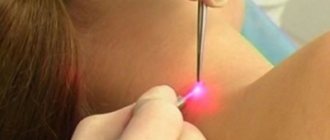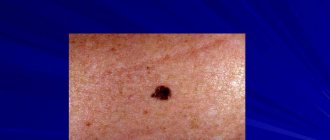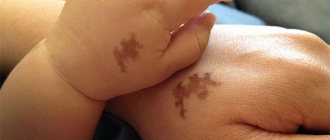Classification of tingling in the body as a symptom of disease
The feeling of goose bumps on any part of the skin and small prickles along them should not be left without due attention. They may indicate dormant diseases that are occurring or just emerging in the body, of which a person is completely unaware. Doctors call this manifestation of sensitivity paresthesia.
This happens mainly due to poor blood flow to certain areas. In some situations, before such manifestations there is a loss of sensitivity to irritants of the lower or upper extremities.
Along with this, the following changes are noticeable:
- sensitivity increases to even the most gentle touches;
- in some areas, on the contrary, it decreases;
- muscle weakness appears;
- joint mobility decreases;
- annoying itching and unpleasant burning sensation;
- severe pain reactions in any part of the place.
All these signs indicate a significant decrease in the sensitivity of nerve endings. However, even manifestations that do not cause discomfort should not be ignored.
This may be the main signal of the onset of such diseases:
- ischemia;
A stroke could be the cause of tingling throughout the body. - failures in the timely supply of blood to the brain;
- various injuries;
- sudden convulsive attacks;
- alcoholism;
- pathological disorders of the functioning of excretory organs;
- oncological formations;
- endocrine system;
- spine and joints;
- migraine;
- Raynaud's disease.
If the state of discomfort does not go away for a long period, then you need to contact your local doctor or neurologist to receive further instructions on diagnostics.
Spinal cord tumor
A spinal cord tumor is an abnormal growth that can develop on the spinal cord. These tumors can be benign or malignant. Benign tumors do not invade surrounding tissue, while malignant or cancerous tumors can spread to other parts of the body.
These tumors can cause problems when they press on the spinal cord. Symptoms depend on the location of the tumor, but may include:
- backache
- numbness or tingling
- weakness or lack of coordination in the legs or arms
- decreased sensitivity to pain or temperature
- bladder and bowel problems
Treatment
Treatment depends on the size, type and location of the tumor. However, the doctor usually recommends surgery to remove the tumor. Other treatment options may include radiation therapy and chemotherapy.
Possible causes of tingling in the body
Tingling all over the body like needles, the causes of which are accompanied by chronic diseases, can be characterized by:
- deprivation of the body’s ability to perceive external stimuli;
- painful attacks;
- muscle atrophy;
- debilitating itching.
Often a person experiences such negative reactions after nerves and blood vessels are pinched. This happens when you are in an uncomfortable body position for a long period of time. And when it changes, blood circulation throughout the body is normalized and discomfort disappears.
In older people, cells perform their purpose less well and, as a result, receive poor nutrition. Therefore, their paresthesia has chronic manifestations.
Other reasons include:
- skin diseases;
- long-term and voluminous physical exercises;
- fungal infection;
- mental disorders;
- insect bites;
- presence of helminths;
- allergic reactions to medications or cosmetics;
- influence of temperature changes.
A catastrophic lack of chemical elements necessary for the passage of vital processes in the body is manifested by the following symptoms.
On the torso
With spondylosis of the upper spine, discomfort occurs in the neck, back of the head and part of the back. This occurs due to the fusion of several adjacent vertebrae, which leads to compression of the nerve.
On the head
When cerebral blood circulation is disrupted, the head area suffers, nausea appears and the eyes become darker.
Possible causes of discomfort on the head may be:
- overwork – when vascular tone decreases, blood flows out of the brain;
- dystonia;
- eye strain – long periods of work at the computer, reading in poor lighting.
Migraine can also produce similar negative manifestations.
On the limbs
When an intervertebral hernia occurs, the nerve endings are pinched and frequent tingling occurs in the legs and back. Arthritis and gout due to compression of the nerve roots gives unpleasant sensations to the lower and upper extremities. Diabetic neuropathy causes tingling in the feet. Then they rise along the entire height of their legs and move to their hands.
All over the body
The feeling of minor needle pricks appears with neuroses and depressive states. Cardiovascular diseases are also accompanied by tingling sensations throughout the body. A common cause of paresthesia is disruption of the brain or spinal cord, or peripheral nerves.
It may also indicate the following violations:
- head injury;
- compression in the area of nerves;
- damage or pathology of the spinal cord;
- inflammatory processes or damage to the back muscles;
- stroke;
- diseases of the nervous system;
- poisoning with harmful substances;
- lack of B vitamins;
- protrusion or arthritis.
Prolonged stress or prolonged psychological tension are common causes.
Tingling all over body allergy
The human body experiences a wide variety of sensations.
Some can cause painful sensations, others can be simply unpleasant, and some are simply not quite ordinary. In fact, any sensations indicate that some processes are occurring in the body. Probably the most unusual sensation in the body is tingling.
Often it appears after a person has taken an uncomfortable position, and if you change it, the tingling quickly goes away.
But it turns out that in some cases, such tingling may indicate significant health problems.
Sitting, standing or lying down for long periods of time can also sometimes cause numbness on one side of the body.
People with limited mobility and those who work in settings that require standing for long periods of time tend to be more vulnerable to the onset of this type of numbness, which is also a common complaint among chronic patients and other long-term displaced persons in bed in bed. Changing the position and movement of the arm and numb leg will often help restore blood flow, allowing sensation to return to normal.
Symptoms
Probably every person has experienced a tingling sensation at least once in his life. Doctors call it paresthesia. It arises from the fact that one or another part of the body is poorly supplied with blood.
But sometimes these symptoms indicate something completely different: - This condition is preceded by numbness of the limbs. — Severe weakness appears in all muscles. - There is a burning or itching sensation on the skin. — Increases sensitivity to any touch.
- Some areas of the body completely lose sensation for a short time. — Sometimes there is a stabbing pain, quite severe.
These symptoms indicate a problem with the surface of the skin, and most often it is a circulatory disorder. But most often, just such a violation can signal more serious problems with the body.
Causes
An uncomfortable position blocks the access of blood to certain areas and numbness begins there, which then turns into tingling when blood circulation is restored. But in some people, paresthesia can be chronic.
This often happens in old age, when the circulatory system begins to malfunction. Also, in old age, physical activity, allergies to certain drugs or insect bites, and a lack of vitamins can lead to chronic tingling.
Prolonged exposure to the cold leads to chronic paristhesia. And poisoning is also a direct path to paresthesia.
But in some cases, tingling can indicate serious diseases that occur latently and do not manifest themselves in any way.
People who have mobility problems or who have been bedridden for several months are usually advised to hire nurses who can help them move around from time to time.
The procedure for numbness on the left side of the body usually requires several varied and dynamic approaches and tends to focus on controlling and treating the diseases that underlie the symptom.
Loss of sensation in entire parts of the body rarely occurs without other problems.
Sometimes the tingling goes away independently, as is the case when it is caused by immobility, but for any person who experiences numbness that doesn't go away, comes and goes with some regularity, or gets worse over time, doctors usually recommend asking for help identifying the underlying cause.
These could be kidney or liver diseases, vascular diseases, or endocrine diseases, as well as diabetes, cancer, blockage of individual vessels or even their ruptures.
Injury or inflammation can also lead to tingling. If a person abuses alcohol, tingling is a common symptom.
Migraines, headaches and even epilepsy also give a tingling sensation in the body.
Itching and burning
These are abnormal sensations that can occur anywhere in the body, but are often felt in the fingers, hands, feet, arms or legs. There are many possible causes of numbness and tingling, e.g. Numbness and tingling can be caused by other conditions, including.
Your healthcare provider should identify and treat the cause of the numbness or tingling. Treatment for this condition may make the symptoms go away or make them worse. If you have diabetes, your provider will talk about ways to control your blood sugar.
So, first of all, if the tingling is not one-time in nature, you need to consult a doctor to diagnose the symptoms of other hidden diseases. And even if the tingling is localized only in one part, but is felt constantly and even intensifies with exercise, this is a reason to consult a doctor.
In cases where such tingling is also accompanied by other, no less serious symptoms, namely nausea, dizziness or even darkening of the eyes, then consultation with a therapist is mandatory.
First of all, the doctor will ask about all the symptoms, prescribe various laboratory tests, and only then refer you to the right specialist, who will make an accurate diagnosis. Diagnostic procedures: - MRI of the brain or spine. -X-ray examination. — Cardiogram of the heart. - Ultrasound of blood vessels.
— electromyogram. — General blood test. - In some cases, even a biopsy of the skin and nerves may be prescribed. — Cerebrospinal fluid analysis.
After all the studies have been completed, the doctor can independently prescribe the necessary treatment. But in very difficult cases, he will give a referral to a specialist such as a surgeon, endocrinologist or cardiologist to make a more accurate diagnosis and establish comprehensive treatment.
Medicines that cause numbness or tingling may need to be changed or adjusted. Because numbness can cause decreased sensation, you may be more likely to accidentally injure a numb arm or leg. Take precautions to protect the area from cuts, impacts, bruises, burns or other types of injury.
When to contact a medical professional
Go to the hospital or call your local emergency number if. Call your doctor if.
What to Expect at Your Doctor's Office
The healthcare provider will take a medical history and perform a physical examination, carefully examining the nervous system.
Some diseases that cause these symptoms
Cervical spondylosis. When the disease occurs, adjacent vertebrae grow together and therefore the nerves begin to be compressed. This is what causes such unpleasant tingling sensations in a certain area of the body, namely the back of the head, neck and upper back. — Intervertebral hernia.
If it is present, nerve endings and even blood vessels are pinched. Therefore, a tingling sensation may occur in the legs or back. — Diseases of the heart and blood vessels give a feeling of numbness in the extremities, in particular the left hand.
— Gout, various arthrosis and other joint diseases cause inflammatory processes, which leads to compression of the nerves and therefore tingling is felt in the arms and legs.
- If cerebral circulation is disrupted or blood vessels are blocked there, then a stroke may occur and then the tingling sensation is localized on the scalp. At the same time, the vision may become dark and the muscles will become paralyzed. - Mental illnesses can also have symptoms of tingling throughout the body.
Most often, such symptoms are characterized by schizophrenia, depression or neuroses. - But tingling in the legs can signal the development of diabetes. It is with this disease that the nerve tips are affected, which gives similar symptoms.
If such symptoms appear periodically, there is no need to worry at all. But tingling for no particular reason, which appears quite often, should alert you.
He will ask questions about your symptoms. These may include when the problem started, where it is, and if there is anything that makes your symptoms better or worse. Your doctor may also ask questions to determine your risk for stroke, thyroid disease or diabetes, as well as questions about habits and medications.
Blood tests that may be ordered include. Image testing may include. Other tests that may be performed include. Peripheral nerve disorders. Study of the sensory system. Actual physical diagnosis. 4th ed.
Their attention should be directed to more useful aspects such as doing some constructive activity, exercising, learning some issues or skills.
The goal is to avoid being trapped by these symptoms because the torment they produce causes more anxiety.
But it happens that even during a medical examination no diseases were found, then perhaps the person is simply leading an incorrect lifestyle, and when he changes, all the unpleasant symptoms and sensations will simply go away and will no longer bother you.
— Often, incorrect body position causes congestion in the vessels and limbs — Tight clothing and shoes can also lead to squeezing of blood vessels and a deterioration in the blood supply to the body. — Correct posture is the key to good health.
— Hypothermia can also lead to tingling sensations in the body.
-To improve your well-being and general condition of the body, you need to do physical exercises or yoga, and also visit the pool and gym.
This video teaches us to keep our mind in the present. We only need one minute of our time. The following list of symptoms includes the most common ones reported by people with anxiety.
The list is quite extensive and there may be symptoms that you experience that are not listed. This does not mean that you are sick or that you are suffering from anything else.
We are all biologically different, and some people simply react differently during an anxiety attack.
Source: https://allergen.feedjc.org/pokalyvanie-vo-vsem-tele-allergija/
Types and distinctive signs of symptoms
There are 2 types of paresthesia. The first is called transitory.
It occurs as a result:
- taking certain medications;
- migraine;
- mechanical compression of nerves and muscles.
The other is chronic. It appears in disorders affecting the central nervous system. This may be vascular damage due to various types of infections or inflammation.
Stitching pains
Chronic paresthesia causes stabbing pain. When such troubles affect the lower limbs, it complicates the process of walking. Such painful manifestations anywhere in the body cause great discomfort and cause nervous irritation.
If they do not leave a person for more than 3 months, it is necessary to contact a medical institution to obtain specialist advice.
Itching
Itching appears when the nervous system is damaged along any part of the path. It does not arise on its own. It is accompanied by other symptoms (pain, tingling).
Burning
A burning sensation in the body may appear due to the following diseases:
- vegetative-vascular dystonia;
- stroke;
- neuralgia;
- dermatomyositis.
In humans, such unpleasant feelings can also appear when the endocrine system is disrupted.
Shingles
Shingles, or herpes zoster, is a painful, itchy rash that usually develops on one side of the body. The rash can appear on any part of the body, including the back and face.
The rash causes fluid-filled blisters to form, which lead to scabs within a few days and usually clear up in 2 to 4 weeks.
Before the rash appears, a person may experience tingling, itching, or a painful burning sensation in the affected area.
Other symptoms may include:
- fever and chills
- headache
- stomach upset
A person may develop shingles if they have previously had chickenpox. When a person recovers from chickenpox, the varicella-zoster virus that causes the infection remains inactive in the body. This virus can reactivate many years later, causing an outbreak of shingles.
According to the US Centers for Disease Control and Prevention, approximately one in three people will develop shingles in their lifetime. An outbreak of shingles may occur more than once in one person.
Treatment
Doctors may prescribe antiviral drugs that help reduce the severity and shorten the duration of the disease. Over-the-counter pain relievers, wet compresses, and colloidal oatmeal baths may also help relieve symptoms.
Proper nutrition or diet therapy
Tingling sensations all over the body, like needles, can be treated comprehensively. Knowing the reason for their appearance, they select a set of medications and perform a massage. However, a balanced diet also plays an important role. A lack of vitamin B12 leads to such health problems. If it is not restored, then a positive result in treatment may not be achieved.
We must remember that such discomfort can occur as a consequence of having some kind of disease. Therefore, it is important to conduct a diagnosis and, depending on the result, create a diet. It may change due to existing illness.
Permitted and prohibited products
The menu of a person suffering from unpleasant symptoms should contain foods that contain the necessary vitamin B.
It is found in sufficient quantities in:
- beef and chicken liver;
- yogurt;
- lean pork;
- dairy products;
- lamb;
- sire tofu;
- grain products;
- eggs;
- fish of different varieties (carp, mackerel, perch);
- rabbit and poultry meat;
- beef.
If the patient has diabetes, then the product must be selected taking into account this disease. Eliminate baked goods and cereals from your diet. You need to eat less beets and potatoes. In this case, berries and fruits are undesirable. Bananas, grapes, and cheese can increase blood glucose.
It is advisable to avoid drinking alcohol and limit the presence of spicy and spicy foods on the menu, as they aggravate the development of tingling sensation. Jerusalem artichoke has a good effect on the body; it has a beneficial effect on nerves and blood vessels.
Menu for the week
The table shows an approximate selection of dishes for the week:
| Day of the week | Eating in order | Menu |
| First | 1 | Two soft-boiled eggs, dried fruit tea with crackers |
| 2 | Banana | |
| 3 | Vegetable soup, stewed liver, tea | |
| 4 | Berry-fruit jelly | |
| 5 | Potatoes with fish | |
| Second | 1 | Oatmeal, tea |
| 2 | Kissel, cookies | |
| 3 | Buckwheat soup, fish cutlets, compote | |
| 4 | Jelly | |
| 5 | Vegetable stew with meat | |
| Third | 1 | Cheesecakes, cocoa |
| 2 | Avocado | |
| 3 | Lenten soup, chicken with vegetables, dried bread, herbal tea | |
| 4 | Apple, nuts | |
| 5 | Oatmeal porridge, walnuts, stewed liver, tea | |
| Fourth | 1 | Steamed omelette, dried fruit compote |
| 2 | Fruit soufflé | |
| 3 | Rice soup, salmon and vegetable casserole, tea | |
| 4 | Compote, cookies | |
| 5 | Pilaf, compote, bread | |
| Fifth | 1 | Cottage cheese and berries casserole, tea |
| 2 | Banana | |
| 3 | Soup, barley porridge, boiled liver, compote, bread | |
| 4 | Yogurt | |
| 5 | Boiled vegetables, fish cutlet, tea | |
| Sixth | 1 | Cottage cheese casserole, low-fat yogurt |
| 2 | Banana | |
| 3 | Cereal soup, baked mackerel | |
| 4 | Dried fruits | |
| 5 | Baked fish with vegetables, tea | |
| Seventh | 1 | Rice pudding, compote |
| 2 | Berry mix with yogurt | |
| 3 | Soup, chicken cutlets, potatoes, tea | |
| 4 | Cookies, tea | |
| 5 | Vegetable stew, boiled fish, bread, cocoa |
Arteriovenous malformations
Arteriovenous malformations (AVMs) are tangled or irregularly shaped blood vessels that usually occur in the brain or spinal cord but can form anywhere in the body. These malformations can affect blood flow and, depending on their size and location, can cause a range of symptoms that can vary in severity.
Symptoms may include:
- back pain or weakness in legs
- headache
- seizures
- numbness, tingling and pain
- loss of coordination
- dizziness
- vision problems
- memory problems or confusion
- speech problems
Doctors don't fully understand the cause of AVMs, but they believe they usually form during fetal development.
Treatment
Treatment approaches for AVMs depend on the location of the malformation and the severity of symptoms. Sometimes your doctor may recommend surgery to remove or cut off the blood supply to the AVM.
Drug therapy
Physiotherapeutic treatment has a good effect. It is aimed at eliminating unpleasant sensations.
These include:
- administering medication using current (electrophoresis);
- healing by applying mud to sore spots;
- acupuncture;
- diadynamic currents;
- magnetotherapy.
Massage is an excellent way to relieve the patient's condition.
What causes of tingling in the body are an indication for taking medications?
Tingling throughout the body like needles (the causes are determined during diagnosis) in cases of impaired conduction through the nerves is treated with medications.
For this purpose the following drugs are prescribed:
- B vitamins - it is more advisable to use them in the form of injections, this is necessary for their rapid entry into the bloodstream;
- antiplatelet agents that promote better blood circulation in the body;
- antioxidants that improve metabolic processes in tissues.
It is strictly prohibited to start taking pharmaceutical drugs on your own. Only after being prescribed by a qualified doctor should a course of treatment be carried out.
He may prescribe the following medications:
- antihistamines - if there is irritating itching, severe burning;
- local products with a cooling effect;
- sedatives – for nervous disorders.
Unpleasant feelings in the hands are eliminated by anti-inflammatory drugs or those that improve blood circulation.
Names of medications, instructions for use
Tingling all over the body like needles (the reasons can only be determined by a doctor, since self-diagnosis can lead to incorrect treatment and complications in the future) is eliminated with vitamins, medications that reduce blood viscosity, and antioxidants.
These medications include:
Physiotherapy: types and descriptions
Therapeutic baths have a great beneficial effect.
The following herbs are used for their preparation:
- chamomile;
- sage;
- series.
The water temperature should be warm to make the person comfortable. Hot liquid should not be used. Procedure time – 20 minutes. Contrast baths will improve blood circulation and muscle function. To do this, you need to prepare 2 containers with hot and cold water. Alternately lower your legs into each of them.
After this event, it is advisable to do a massage using a warming cream. You can use a roller or brush. It also improves blood circulation in the vessels and reduces unpleasant symptoms. The exposure time should be short so as not to cause damage to the skin.
The following procedures are effective for tingling:
- electrophoresis - carried out with ionic solutions, medicine is delivered to soft tissues using current;
- magnetic therapy;
- mud therapy.
Acupuncture may be prescribed.
Exercise therapy
The main objectives of physical therapy are:
- stimulating the normalization of blood circulation;
- strengthening weakened muscles and relaxing them;
- healing and strengthening of the whole body.
Exercises are used only for the legs, without tension and for stretching, while hanging.
Set of exercises
You can use the following selection of exercises:
- Lying on your back, raise your bent legs.
- Then raise your straight limbs.
- Extension at the ankle joint.
- Standing on all fours, throw your head back and move your leg back.
- In the same position, raise your leg parallel to the floor.
- Lying on your stomach, rise on your elbows as high as possible.
- While kneeling, tilt your chest toward the floor.
- Lie with your back up, lift your torso without lifting your hips from the floor.
They need to be done slowly, 10 times each, taking frequent breaks.
Frequency and duration of classes
At first, you need to perform movements with a small amplitude, until the first pain appears. Avoid muscle fatigue. Lesson duration is up to 20 minutes.
Folk remedies: recipes and dosage regimens
Soothing teas have a good effect on the body of those suffering from tingling.
To prepare them you can use the following herbs:
- chamomile and lemon balm;
- motherwort;
- mint.
To brew, you need to pour 10 g of the plant with 1 glass of boiling water. Leave for 20 minutes. Take 3 – 4 times a day. The course of treatment is about 1 month.
For baths you should prepare the following solution:
- Take primrose flowers and horse chestnut bark, 2 tbsp each. l.
- Add yarrow herb and medicinal clover 4 tbsp. l.
- Mix everything well.
- 3 tbsp. l. collection, pour 1 liter of water and keep on fire for 10 minutes.
Strain and pour into a bowl. Keep the limbs in this decoction for no more than 25 minutes.
A medicinal drink for oral administration should be prepared as follows:
- You need to take nettle leaves, viburnum and parsley (2 tsp each).
- Add goldenrod and tricolor violet herbs (3 tsp each).
- After thorough mixing, add 30g of the mixture and pour in 0.5 of water.
- In 10 minutes. After boiling, let cool slightly and strain.
You need to take 100 g after meals twice a day.
Indications for surgery for tingling throughout the body
Surgery is advisable if a tumor exists. It compresses the nerve endings, so it must be removed. The possibility of performing the operation is determined individually by the doctor.
To prevent tingling throughout the body like needles, you need to spend more time in the fresh air, eat nutritiously and engage in feasible physical exercise. If the causes of unpleasant sensations are associated with diseases, then you need to treat them. To avoid serious complications, such symptoms should not be triggered.
Article design: Vladimir the Great
Fibromyalgia
Fibromyalgia is a chronic condition that causes widespread pain and tenderness and increases sensitivity to pain. People with fibromyalgia may also experience numbness or tingling in different parts of the body, such as the back, arms and legs.
Fibromyalgia can cause other symptoms, such as:
- fatigue
- anxiety and depression
- difficulty sleeping
- headache
- difficulty thinking clearly
- problems with memory and concentration
Doctors don't fully understand what causes fibromyalgia.
Treatment
Treatment usually involves a combination of medication therapy and lifestyle changes, including:
- over-the-counter nonsteroidal anti-inflammatory drugs, such as ibuprofen and naproxen
- prescription medications, including antidepressants and antipsychotics
- regular exercise
- Stress reduction and relaxation practices such as meditation and yoga
- Cognitive behavioral therapy (CBT) for treating depression











